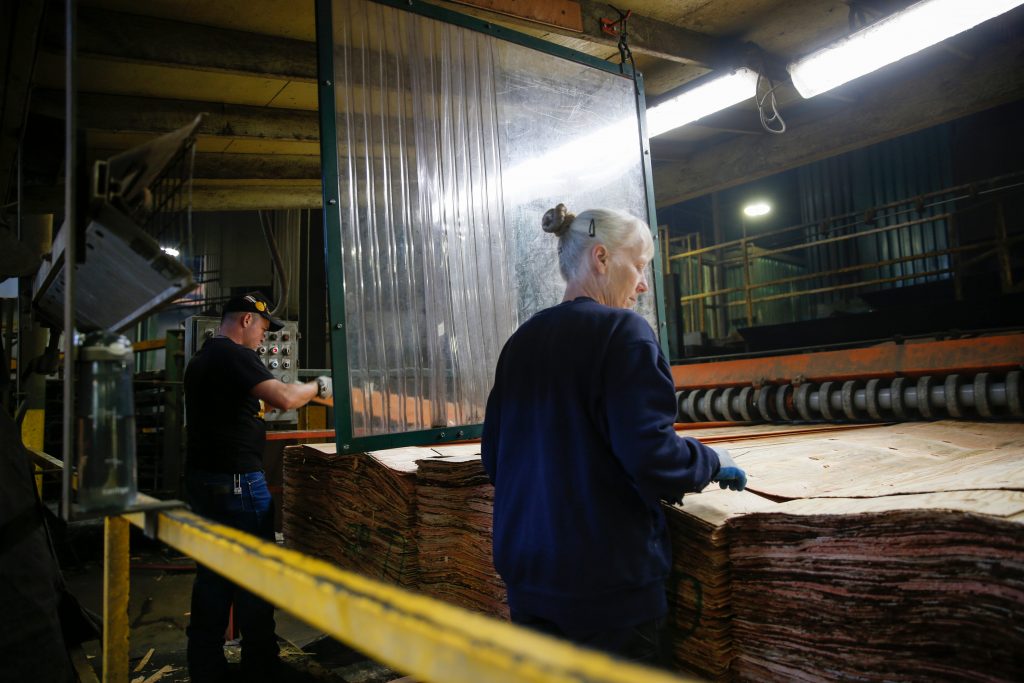Lumber Shortage Pushes Futures to New Highs

Luckbox highlighted in August that a laptop shortage had developed in the United States due to a flood of demand triggered by remote learning and working. Unfortunately, shortages have spread to other sectors of the economy, and the situation could get even more critical during the winter.
The biggest driver of these shortages is the fact that the coronavirus pandemic hasn’t yet abated, and is in fact surging—a situation that was widely anticipated to play out in the Northern Hemisphere during fall and winter.
With caseloads rising, many countries—mostly in Europe at this point—have been forced to reinstitute economic lockdowns, a situation that can be disruptive for manufacturing companies and their supply chains. On top of that, rising numbers of infections also reduce the pool of available workers, either due to sickness or quarantines.
A common theme characterizing the shortages is the fact that many of these products have experienced a surge in demand during the pandemic. For example, with many people isolating at home, there’s been a spike in home remodeling and improvement projects, which has contributed to lumber shortages.
With many lumber mills struggling to maintain consistent production levels, that surge in demand simply can’t be met. And as most investors and traders are well aware, those demand-supply dynamics typically result in rising prices—which is exactly what has transpired.
Last month, lumber prices were trading at levels 250% higher than those observed in 2019, with deliveries delayed by six to eight weeks.
Since hitting a high of $950 per thousand board feet in mid-September, lumber prices have moderated slightly and dropped down to $750 per thousand board feet in October. Those levels are still 120% higher than what was observed at the end of 2019.
Given the above price action, it shouldn’t come as much of a surprise that the lumber sector in the stock market has also been on fire in 2020.
Lumber Liquidators (LL) is up a stunning 185% year-to-date (YTD), which puts its performance on par with some of the leaders in the red-hot technology sector. Weyerhaeuser Company (WY), also a big name in the lumber industry, is up about 70% since March.
Canadian-listed West Fraser Timber (WFT.TO) has likewise made a strong move, rallying roughly 155% since the end of March. Returns such as these demand attention, and market participants would be wise to monitor the lumber sector during the remainder of 2020 in case additional opportunities materialize.
Moving on, the food and beverage industry is another that has seen shortages emerge due to shifting consumer behaviors.
For example, with many bars and restaurants operating at reduced capacity, there’s been a surge in drinking and eating at home. The resulting increases in demand have seen shortages emerge for products such as aluminum cans (i.e. beer packaging) and spices/seasonings.
Grocery store operators in some areas of the U.S. have voiced concerns over shortages of these goods, in addition to beef, soup and toilet paper. Additionally, the following products have been identified as difficult to come by:
- Personal protective equipment (PPE)
- Medicines
- Pasta
- Baking supplies
- Paper goods (including toilet paper)
- Spices and spice packaging materials
- Computer hardware (do-it-yourself, DIY)
- Laptops
- Aluminum cans
- Bicycles
- Canning supplies (for winter storage)
While shortages in the above products are sub-optimal, it’s arguable that medicines and PPE are the most worrisome.
Nursing homes have been hit hard by the pandemic, with roughly 38% of the total COVID-19 deaths in the country linked to nursing home residents and staff. Adding medicine and PPE shortages to the list of concerns in these facilities simply isn’t feasible.
Heartbreakingly, it was estimated in August that only 20% of nursing homes in the U.S. had adequate supplies of PPE.
Along those lines, there are millions of Americans facing hunger-related hardship at this time. The Washington Post reported that a shortage of 8 billion meals is expected in the U.S. over the next 12 months, which suggests that a hunger crisis is currently at hand.
Ultimately, these hunger issues can also be tied back to shortages—specifically, a shortage in charitable donations. The Wall Street Journal reported in July that 82% of food banks in the United States are serving more people than they did in 2019, with an average increase in demand of 50%.
Looking at a specific example, the Sacramento Food Bank & Family Services organization in California estimates that it was serving on average approximately 150,000 people per month in 2019, but that number has jumped to 300,000 per month in 2020.
The Federal Reserve warned last month that without a new stimulus package, the U.S. economy is at serious risk of a double-dip recession, calling for swift action by lawmakers.
It should be noted that shortages haven’t been limited to goods during the pandemic—there’s been plenty of service shortages that have emerged as well.
Service shortages can typically be tied back to a lack of human resources. For example, staffing shortages are said to be a big problem in the following sectors: healthcare, public transportation, commercial truck driving and education.
One can only hope that those experiencing financial difficulties during this time might find temporary or permanent employment in these areas, which could help alleviate some difficulties and bottlenecks.
Given how unpredictable things are at this time, it’s certain that additional shortages will emerge in the coming months. Investors and traders would be wise to monitor these shortfalls because they might provide further insight and context on potential investment and trading opportunities.
To learn more about trading futures, and the lumber sector in particular, readers are encouraged to review a past installment of Futures Measures when scheduling allows.
Sage Anderson is a pseudonym. The contributor has an extensive background in trading equity derivatives and managing volatility-based portfolios as a former prop trading firm employee. The contributor is not an employee of Luckbox, tastytrade or any affiliated companies. Readers can direct questions about any of the topics covered in this blog post, or any other trading-related subject, to support@luckboxmagazine.com.



















